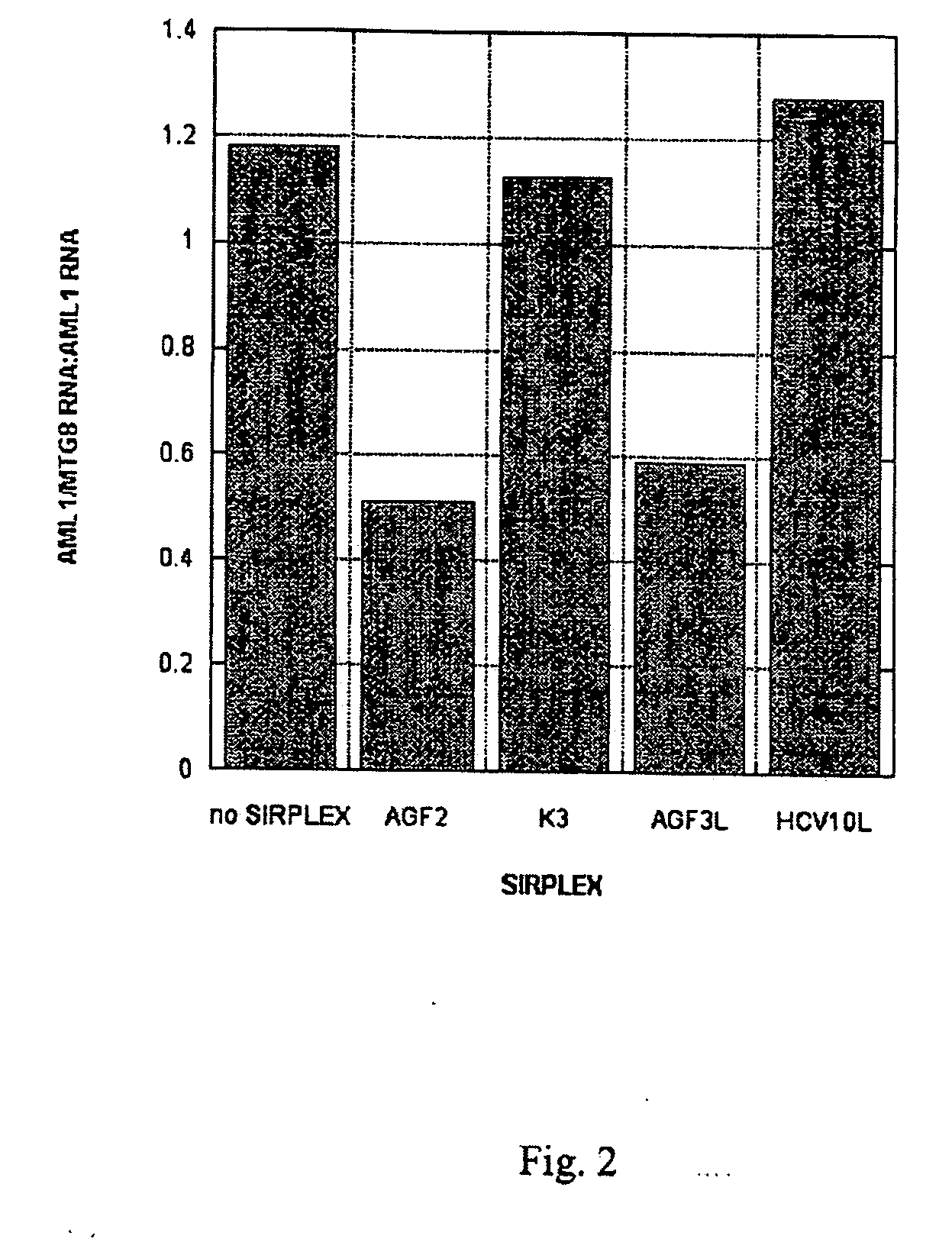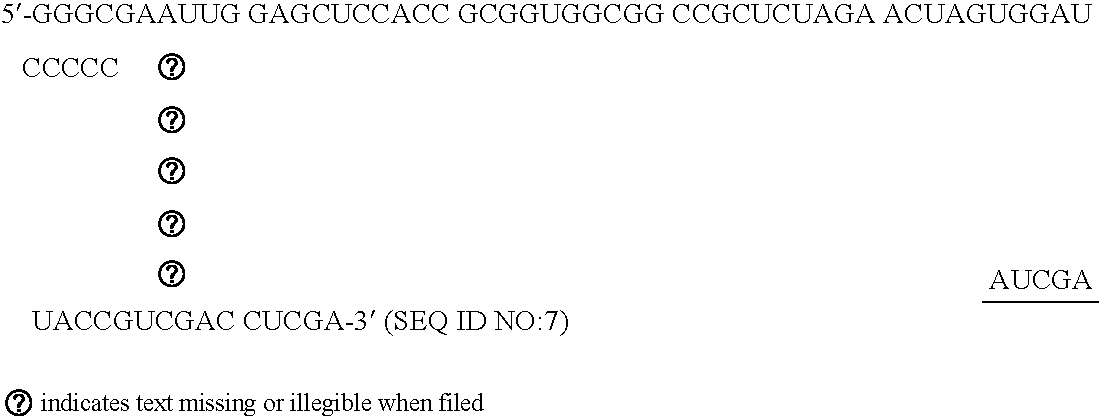Double-stranded RNA (dsRNA) and method of use for inhibiting expression of a fusion gene
a technology of fusion gene and double-stranded rna, which is applied in the direction of peptide/protein ingredients, drug compositions, genetic material ingredients, etc., can solve the problems of anti-sense approaches, 1 stoichiometric, and inherent limitations of each agent, and achieve the effect of inhibiting the expression of fusion genes
- Summary
- Abstract
- Description
- Claims
- Application Information
AI Technical Summary
Benefits of technology
Problems solved by technology
Method used
Image
Examples
example 1
Inhibition of AML-1 / TG8 Fusion Gene Expression by RNA Interference
[0047] In this Example, AML-1 / MTG8 double stranded siRNAs transfected into Kasumi-1 tissue culture cells are shown to specifically inhibit AML-1 / MTG8 fusion gene expression.
Synthesis and Preparation of dsRNAs
[0048] Oligoribonucleotides were synthesized with an RNA synthesizer (Expedite 8909, Applied Biosystems, Weiterstadt, Germany) and purified by High Pressure Liquid Chromatography (HPLC) using NucleoPac PA-100 columns, 9×250 mm (Dionex Corp.; low salt buffer: 20 mM tris, 10 mM NaClO4, pH 6.8, 10% acetonitrile; flow rate: 3 ml / min). Formation of double stranded siRNAs was then achieved by heating a stoichiometric mixture of the individual complementary strands (10 M) to 95° C. for 5 minutes in 25 mM tris-HCl, pH 7.5, and 100 mM NaCl, followed by subsequent cooling for 30 minutes to 37° C.
[0049] dsRNA molecules with linkers were produced by solid phase synthesis and addition of hexaethylene glycol as a non-nucle...
example 2
Inhibition of Bcr-Abl Fusion Gene Expression by RNA Interference
[0064] In this Example, Bcr-Abl-specific double stranded siRNAs transfected into CD34+ primary hematopoietic cells from CML patients are shown to specifically inhibit Bcr-Abl gene expression.
SiRNA Synthesis
21-nt single-stranded RNAs (BCR-ABL-1 and BCR-ABL-2) directed against the fusion sequence of bcr-abl are chemically synthesized with or without a hexaethylene glycol linker as described in Example 1.
[0065] The sense and antisense sequences of the siRNAs are:
BCR-ABL-1: 5′-GCAGAGUUCAAAAGCCCUUdTdT-3′(s1) 5′-AAGGGCUUUUGAACUCUGCdTdT-3′(s2)BCR-ABL-2: 5′-AGCAGAGUUCAAAAGCCCUdTdT-3′(s1) 5′-AGGGCUUUUGAACUCUGCUdTdT-3′(s2) ↓bcr-abl 5′...UGGAUUUAAGCAGAGUUCAAAAGCCCUUCAGCGGCCAGUA...3′ BCR-ABL-1: —————————N19————————TT TT————————————————————T BCR-ABL-2 ——————————N19————————TT TT————————————————————— ...
PUM
| Property | Measurement | Unit |
|---|---|---|
| body weight | aaaaa | aaaaa |
| pH | aaaaa | aaaaa |
| pH | aaaaa | aaaaa |
Abstract
Description
Claims
Application Information
 Login to View More
Login to View More - R&D
- Intellectual Property
- Life Sciences
- Materials
- Tech Scout
- Unparalleled Data Quality
- Higher Quality Content
- 60% Fewer Hallucinations
Browse by: Latest US Patents, China's latest patents, Technical Efficacy Thesaurus, Application Domain, Technology Topic, Popular Technical Reports.
© 2025 PatSnap. All rights reserved.Legal|Privacy policy|Modern Slavery Act Transparency Statement|Sitemap|About US| Contact US: help@patsnap.com



